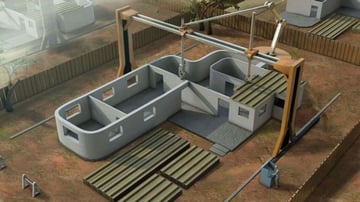One of the problems faced by clients or, even architects is visualization of spaces. Despite, of rendered images or eye level views, the space doesn’t match the vision of the architect, when he enters the space first time.
Initially, presentation and visualization techniques like floor plans, sections elevations were used to present the design and for constructions. Following, came rendering of architectural drawings, with the help of water-diluted ink, watercolors. With the approaching technology, came software to develop renders and models.
Then came 3D printing, the physical scaled model has revolutionized architecture and design in another level. Aiding in the conceptualization of design or details with the help of immediate and detailed printing.

But despite these advancements Virtual Reality, a technology that enable people to experience their designs, in real scale, take a win. It empowers them to explain their imagination as well as it could be perceived in reality.
VR head-mounted displays (HMDs) such as the Oculus Rift and HTC Vive have the power to have the power way architects design and communicate perceive the buildings before they come into existence. The wearer of the device is immersed in a virtual three dimensional world, that gives a sense of scale, depth, and spatial awareness.
Virtual Reality can play an important and useful role in architecture. From the design process to construction detailing, to aiding in visualization. It can iron out construction and serviceability issues, even before breaking ground on site. It can evaluate various design options or showcase proposals to clients who have a tough time imagining the space.
For building owners, VR is a highly effective technology for visualization, marketing and selling of an architectural project to the client.
For construction companies, virtual reality dovetails with a BIM workflow and serves as an integral part of virtual design and construction (VDC).
In architectural practice, is a substantial assistant to architects, as it can rapidly prototype and more effectively, convey architectural concepts throughout schematics and design development.
The benefits of virtual reality to Architecture
Presentation
Proper presentation of the design, and explaining the vision of the architect, is one of the challenges faced by the architecture team. Often, clients fail to understand the design, because of the lack of imagination. This technology has made this process easier for architects.
Due to virtual reality, clients are able to understand the spatial relationship; the impact of light on a room at different times of the day or year, or views from mezzanine floors. It can also help experience the proportion and scale.Detailed Design
Also, architects face a challenge in detailing out interiors or exteriors of a project. Being able to move inside and experience the space from within, allows them to look at the construction and joinery details.
Environmental Data
The impact of your building on the environment is something that, with the help of virtual reality can be a major contribution to the project. With VR you can bring to life some of the environmental factors that may impact your building.
Replicating real life situations
With VR technology, engineers can replicate real-life fire scenarios in order to check whether all the aspects of their designs are functional and effective. For example, they are used to see how long it takes to evacuate a building when a fire guts out a building or which routes are the safest.

Technologies have been changing constantly, from 3D modeling, cloud-based software solutions, drones, 3D printing, and AR/VR, and what not. Despite these technological advancements, the basic requirement for any great design is imagination. Technology may aid one in their explanations or visualizations and should come in place at later stage of design.


